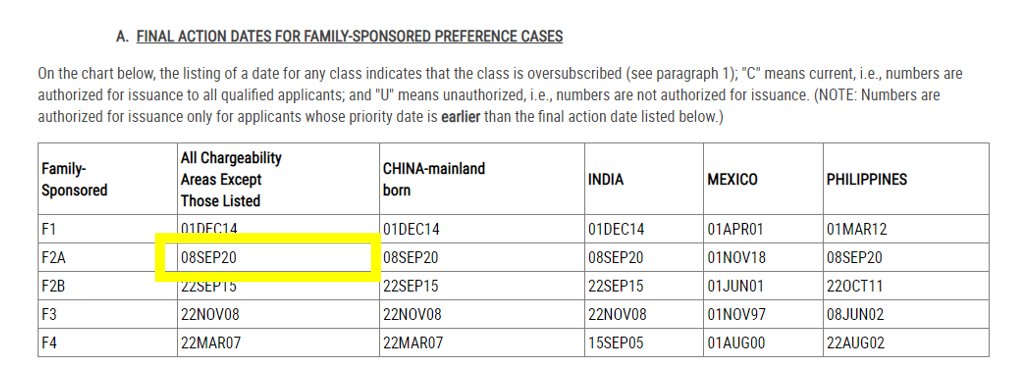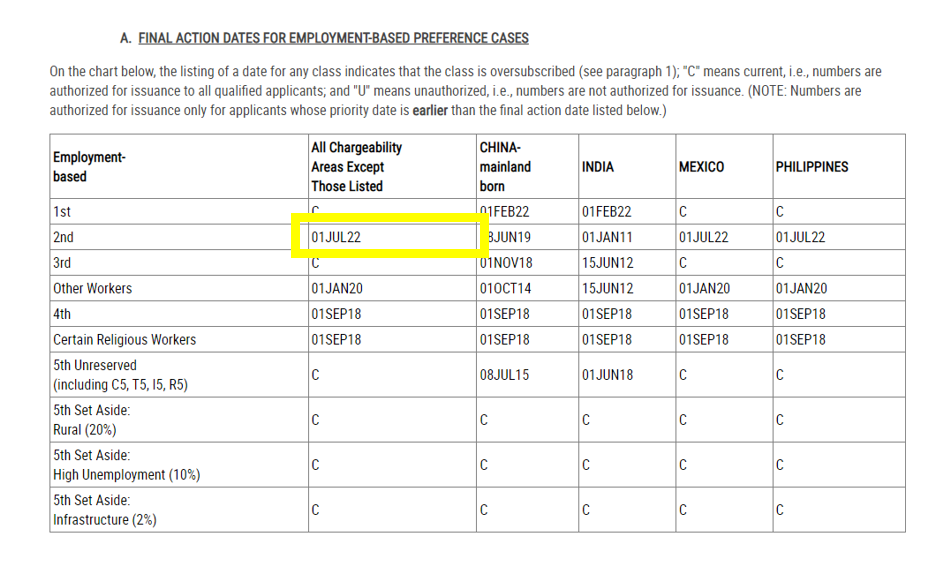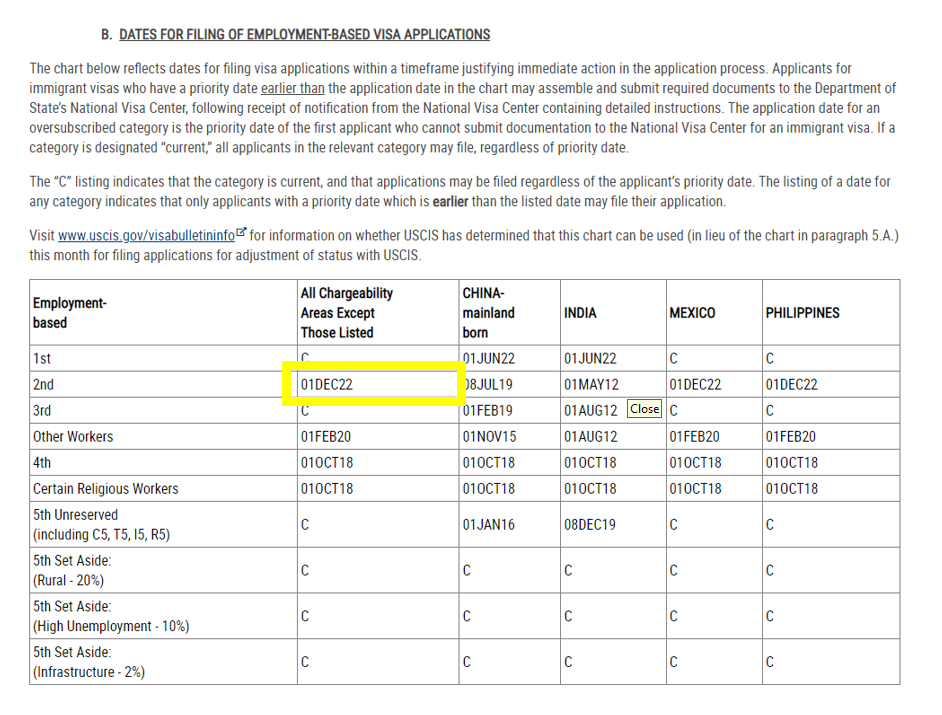Visa Bulletin Regression!

Regression for categories EB-2 and F2A
What is the Visa Bulletin and How does it Work?
The Visa Bulletin are the charts that USCIS and the State Department use to summarize the availability of Immigrant Visa numbers and Green Card numbers available for issuance at any given time.
There are multiple charts that the visa bulletin encompasses.
There are charts for family-based cases and there are charts for employment-based cases.
Within each of these chart categories, there is a “Final Action Dates” chart (the dates when a visa is available and can be issued in your case) and a “Filing Dates” chart (the chart used to determine when you can file documents for your case).
When seeking to file an Adjustment of Status application with USCIS, Applicants are to use the “Final Action Dates” charts, to determine when these applications can be filed. When USCIS determines that there are more immigrant visas available for the fiscal year than there are known applicants for such visas, USCIS will state on its website that applicants may instead use the “Dates for Filing Visa Applications” charts in this Bulletin.
The listing of a specific date for any class/category indicates that the class is oversubscribed (a.k.a. over saturated with Applicants).
If the class is listed as “C”, this means that immigrant visas or green cards are able to be issued for all qualified Applicants and there are no current restrictions on issuance.
If the class is listed as “U”, this means unauthorized, a.k.a. visa and green card numbers are NOT authorized for issuance.
The charts are to be read as follows: Numbers are authorized for issuance only for applicants whose priority date is earlier than the final action date listed.*
*If the class is listed as “C” (current), then numbers are authorized for issued for Applicant’s with any priority date.
What is Retrogression and Why do I Care?
When too many Applicants have applied for a visa or green card under a particular chart class/category and numbers are not available for issuance, the visa bulletin dates will regress, meaning that a specific date will be listed for the class/category and the class will no longer be current.
This is important to know and keep track of, because if an Applicant’s case has a priority date that is AFTER the final action date listed, an immigrant visa or green card will not be able to be issued for them immediately, and they will have to wait for either the class/category to become current again, or for the specific date listed to move up and include their priority date.
This situation is happening now, for the visa classes/categories described below:
- F2A Retrogression for “All Chargeability Areas Except Those Listed”
F2A is the family-based preference category for spouses and children of permanent residents. This visa category (under this particular column) has been current for years, but as of April 2023, the final action date for this category (in this column) has regressed.

Currently the Final Action Date for this class/category in the All Chargeability Areas Except Those Listed column is September 8, 2020. This means that if the priority date listed on your I-130 Receipt Notice is AFTER September 8, 2020, immigration authorities will NOT be able to issue you an Immigrant Visa or green card at this time and you will need to wait for the category to become current again or wait for the listed date to move up to include your priority date.
We have no way to predict when the date for this column and category will come back current again. The visa bulletin is updated each month and needs to be checked on a monthly basis to ascertain the current dates for any visa category.
On the other hand, the Dates for Filing chart shows that the listed date for this column and this category remains current (“C”), therefore Applicants can still continue to file Applications for this category and those applications will be accepted for processing, but a visa or green card is not immediately available and they will need to wait for the Final Action date to become current or include their priority date, for the visa or card to be issued.
- EB-2 Retrogression
EB-2 is the employment-based preference category for Members of the Professions Holding Advanced Degrees or Persons of Exceptional Ability. This visa category (under this particular column) has been current for years, but as of November 2022, the final action date for this category (in this column) has regressed and as of April 2023, has regressed even further.

Currently the Final Action Date for this class/category in the All Chargeability Areas Except Those Listed column is July 1, 2022. This means that if the priority date listed on your I-140 Receipt Notice is AFTER July 1, 2022, immigration authorities will NOT be able to issue you an Immigrant Visa or green card at this time and you will need to wait for the category to become current again or wait for the listed date to move up to include your priority date.
We have no way to predict when the date for this column and category will come back current again. The visa bulletin is updated each month and needs to be checked on a monthly basis to ascertain the current dates for any visa category.
Unfortunately, there is more bad news for this class….
The Dates for Filing chart shows that the listed date for this column and this category is December 1, 2022. This means that following December 1, 2022, Applicants are no longer able to even FILE I-485 applications or submit documents to NVC in relation to their EB-2 case, even if the I-140 has been approved. All Applicants who did not file an I-485 application or submit immigrant visa documents to NVC prior to December 1, 2022, will need to wait for the Filing Date to become current or include their priority date, in order to be able to file these documents accordingly.

This blog is not intended to be legal advice and nothing here should be construed as establishing an attorney client relationship. Please schedule a consultation with an immigration attorney before acting on any information read here.





